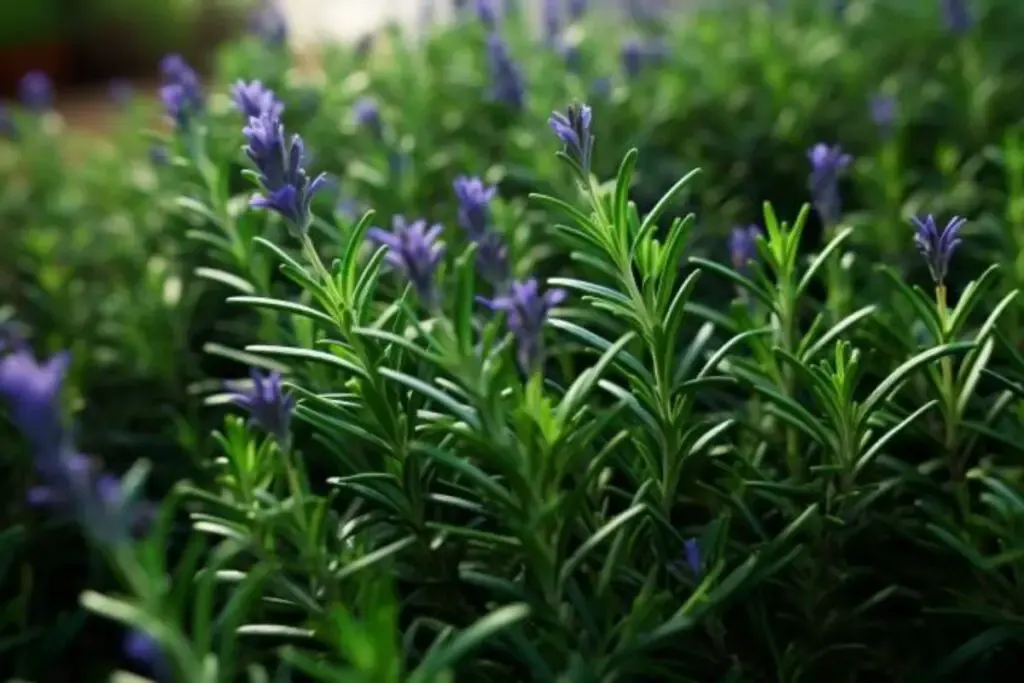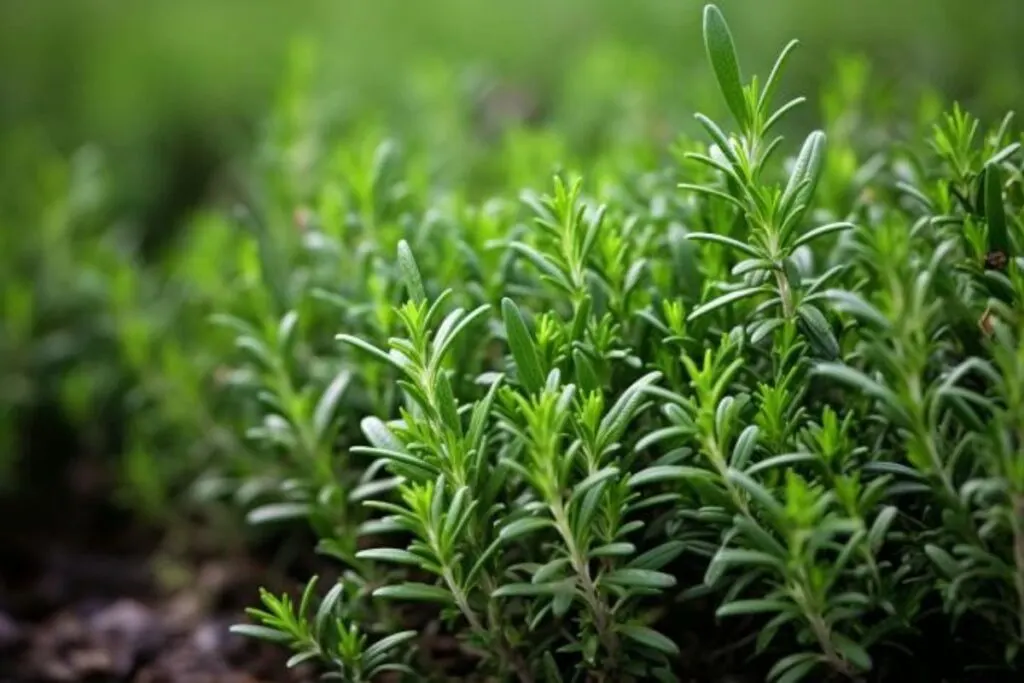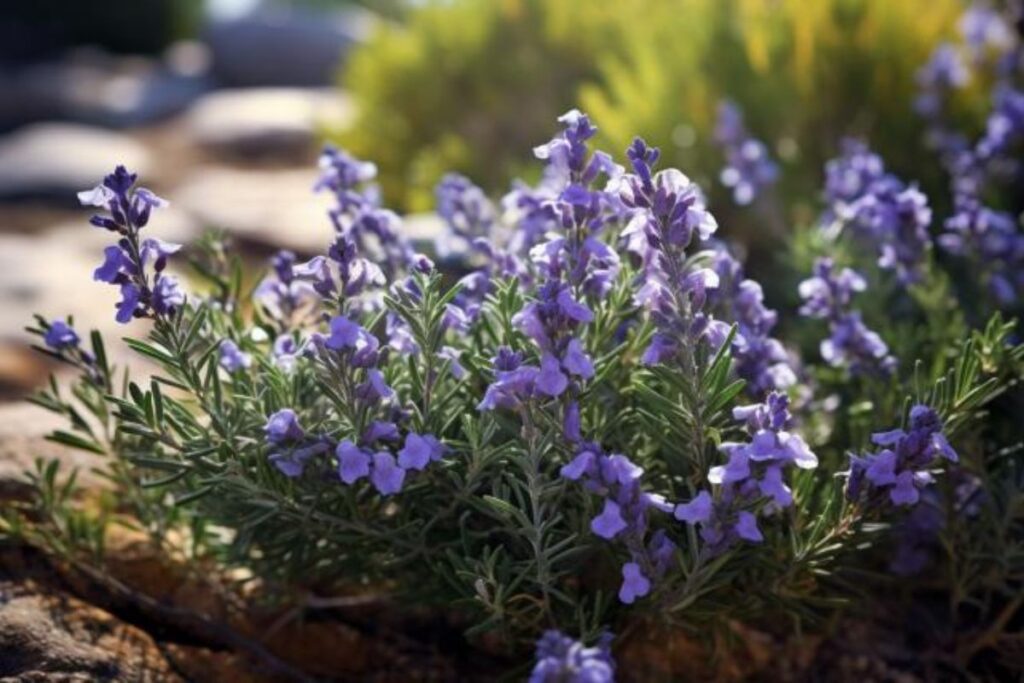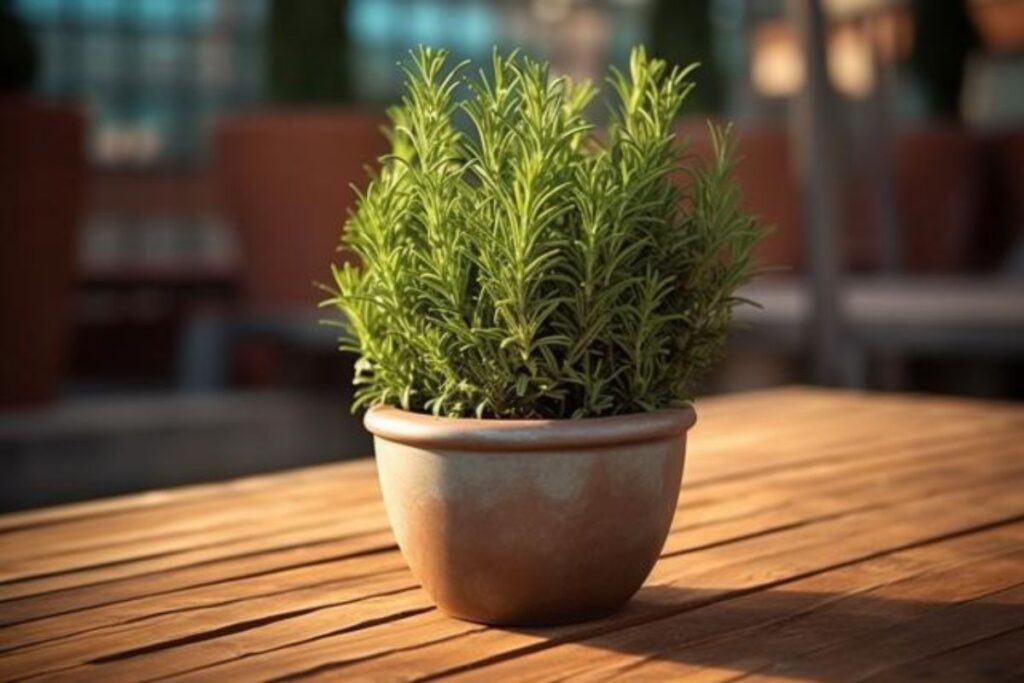Rosemary is a fragrant and versatile herb that every gardening enthusiast should consider growing.
Its delightful aroma, culinary applications, and low-maintenance nature make it a fantastic addition to your garden.
In this guide, we’ll explore the benefits of cultivating rosemary and delve into some of my favorite varieties.
Benefits of Growing Rosemary

1. Culinary Delight
Rosemary’s pungent flavor and aroma can elevate your culinary creations. Whether you’re seasoning roasted vegetables, grilling meats, or infusing oils, this herb adds a delightful depth of flavor to dishes.
2. Aromatic Garden Accent
The fragrant foliage of rosemary can turn your garden into a sensory paradise. As you stroll through your garden, simply brushing against the leaves releases its invigorating scent, making it an excellent choice for borders or pathways.
3. Health Benefits
Rosemary is not just a treat for your taste buds; it also offers potential health benefits. It contains antioxidants and may help improve digestion, enhance memory, and boost overall well-being when incorporated into your daily routine.
My Favorite Rosemary Varieties
Rosemary varieties come in a range of growth habits, flavors, and appearances. Here are a few of my personal favorites:
1. Common Rosemary (Rosmarinus officinalis)

The classic choice for beginners and seasoned gardeners alike, common rosemary boasts a robust flavor and upright growth habit. Its needle-like leaves are a rich green, making it a versatile herb in both the kitchen and the garden.
2. Prostrate Rosemary (Rosmarinus officinalis ‘Prostratus’)

If you’re looking for a low-maintenance ground cover, prostrate rosemary is an excellent option.
With a trailing growth habit and aromatic foliage, it’s perfect for draping over walls, containers, or the edges of garden beds.
3. Tuscan Blue Rosemary (Rosmarinus officinalis ‘Tuscan Blue’)

This variety is a visual delight with its striking, upright growth and vibrant blue-green foliage.
Tuscan Blue rosemary is known for its robust flavor, making it a favorite among chefs. Its tall and bushy nature also makes it a fantastic choice for hedges or as a focal point in your garden.
Rosemary Care
Rosemary care is relatively straightforward, and this aromatic herb can thrive with a little attention to its needs.
In this section, we’ll delve into the essential aspects of caring for your rosemary plant.
Planting

When it comes to planting rosemary, follow these steps for a successful start:
- Select the Right Location: Choose a sunny spot in your garden with well-draining soil. Rosemary loves full sun exposure, so aim for at least six to eight hours of sunlight daily.
- Well-Draining Soil: Ensure the soil is well-draining and slightly alkaline. You can improve drainage by amending the soil with sand or perlite.
- Spacing: If planting multiple rosemary bushes, space them about 2 to 3 feet apart to allow for proper air circulation.
- Container Planting: If you prefer growing rosemary in containers, select pots with good drainage holes. Use a well-draining potting mix and ensure the container receives adequate sunlight.
Light
Rosemary thrives in bright, full sunlight. It’s essential to provide your plant with ample light to encourage healthy growth and robust flavor. Place your rosemary in a location where it can soak up the sun for most of the day.
Soil
The right soil conditions are crucial for rosemary’s success:
- Well-Draining Soil: Rosemary despises soggy roots, so ensure your soil drains well. Sandy or loamy soils are ideal.
- pH Level: Aim for a slightly alkaline to neutral pH range of 6.0 to 7.0. You can adjust the soil pH using amendments if necessary.
Water
Proper watering is essential to keep your rosemary thriving:
- Moderate Watering: Rosemary prefers to dry out slightly between watering sessions. Allow the top 1-2 inches of soil to dry before watering.
- Watering Frequency: In the growing season, water your rosemary plant when the soil feels dry to the touch, usually every 1-2 weeks. Reduce watering during the dormant season.
- Avoid Overwatering: Overwatering can lead to root rot, so be cautious not to keep the soil consistently wet.
Temperature and Humidity
Understanding the temperature and humidity preferences of your rosemary plant is crucial:
- Temperature: Rosemary is hardy in USDA zones 8-10 but can thrive indoors in colder climates. It prefers temperatures between 70-85°F (21-29°C) during the day and slightly cooler nights.
- Humidity: Rosemary appreciates moderate humidity levels. If you’re growing it indoors, consider using a humidity tray or misting the plant occasionally, especially in dry indoor environments.
Fertilizer
Rosemary is not a heavy feeder, but it can benefit from occasional fertilization:
- Fertilizing Frequency: Apply a balanced, slow-release fertilizer in the spring when new growth begins. You can also supplement with a liquid fertilizer every 4-6 weeks during the growing season.
- Avoid Over-Fertilization: Be cautious not to over-fertilize, as this can lead to excessive growth with less concentrated flavor.
Harvesting Rosemary
Harvesting rosemary is a rewarding process that allows you to enjoy the fresh, aromatic leaves in your culinary endeavors. Here’s how to do it:
- Wait for Growth: Allow your rosemary plant to establish itself before harvesting. Typically, you should wait until it’s at least one year old to ensure it has enough foliage to sustain growth.
- Pruning Technique: To harvest rosemary, simply snip off the top few inches of the branches. Use clean, sharp scissors or pruning shears for a clean cut.
- Regular Harvesting: Frequent harvesting encourages bushier growth. You can harvest rosemary throughout the growing season, but avoid taking more than one-third of the plant at a time.
- Storage: Store harvested rosemary leaves in a cool, dry place. You can also freeze them for a longer shelf life.
Pruning
Pruning rosemary is essential for maintaining a healthy and vigorous plant. Follow these pruning tips:
- Spring Pruning: Prune your rosemary in the early spring to remove dead or damaged branches and stimulate new growth. Trim lightly to shape the plant.
- Annual Maintenance: Consider an annual maintenance pruning to keep your rosemary bush in check. Focus on shaping and thinning out crowded areas.
- Avoid Hard Pruning: Avoid heavy pruning, as rosemary may not recover from severe cuts.
Propagating
Propagating rosemary allows you to grow new plants from your existing ones. Here’s how:
- Take Cuttings: In late spring or early summer, take 4-6 inch cuttings from the tips of healthy rosemary branches.
- Remove Lower Leaves: Strip the lower leaves from the cuttings, leaving only a few leaves at the top.
- Rooting Medium: Plant the cuttings in a well-draining rooting medium, such as perlite or vermiculite. Keep the medium consistently moist but not waterlogged.
- Rooting Time: It may take several weeks for the cuttings to root. You can place a plastic bag or a plastic dome over the cuttings to create a mini greenhouse effect, which helps with humidity.
- Transplanting: Once the cuttings have established roots, transplant them into pots or your garden.
How to Grow Rosemary From Seed
While propagating rosemary from cuttings is more common, you can also grow it from seeds. Here’s how:
- Seed Selection: Choose high-quality rosemary seeds from a reputable source.
- Seed Starting: Start the seeds indoors 8-10 weeks before the last expected frost. Plant them in seed trays or pots filled with seed-starting mix.
- Sow the Seeds: Sprinkle the seeds on the surface of the mix and lightly press them down. Keep the soil consistently moist but not waterlogged.
- Warmth and Light: Rosemary seeds require warmth and light to germinate. Use a heat mat to maintain temperatures around 70°F (21°C) and provide bright, indirect sunlight.
Growing in Pots

Growing rosemary in pots is a convenient option, especially if you have limited garden space or need to move the plant to chase the sun. Here’s how to do it:
- Select the Right Pot: Choose a well-draining container that is at least 12 inches deep and has drainage holes.
- Potting Mix: Use a high-quality potting mix with good drainage properties.
- Placement: Place the pot in a sunny location where your rosemary can receive at least 6-8 hours of sunlight daily.
- Watering: Water the plant when the top inch of soil feels dry. Be cautious not to overwater, as potted rosemary is prone to root rot.
- Pruning: Regularly trim your potted rosemary to maintain its shape and encourage bushier growth.
Overwintering
Overwintering rosemary is crucial, especially if you live in colder climates where frost and freezing temperatures are common. Here’s how to ensure your rosemary survives the winter:
- Move Indoors: In areas with harsh winters, consider bringing potted rosemary plants indoors before the first frost. Place them in a sunny window or under grow lights.
- Protect Outdoor Plants: For rosemary planted in the ground, provide protection by covering it with a frost cloth or mulch to insulate the roots. Prune the plant lightly before winter to reduce wind resistance.
- Reduce Watering: During the dormant season, cut back on watering to prevent root rot. Water sparingly only when the soil dries out.
- Monitor Indoor Conditions: If overwintering indoors, ensure the indoor environment is not too dry. Consider using a humidity tray to maintain adequate moisture levels.
Transplanting
Transplanting rosemary may become necessary if you want to change its location or if it has outgrown its current space. Follow these steps for successful transplanting:
- Timing: The best time to transplant rosemary is in the spring or early fall when the plant is not actively growing.
- Prepare the New Location: Ensure the new planting hole or container is ready with well-draining soil.
- Careful Removal: Gently dig up the rosemary plant, taking care not to damage the roots. Use a sharp shovel or garden fork.
- Replant Quickly: Immediately transplant the rosemary into its new location, ensuring it is at the same depth as before.
- Water Thoroughly: After transplanting, water the plant thoroughly to help it settle into its new home.
Common Pests & Diseases
Rosemary is generally resistant to most pests and diseases, but it’s not entirely immune. Here are a few issues to be aware of:
- Powdery Mildew: Rosemary can develop powdery mildew in humid conditions. Ensure good airflow around the plant, avoid overhead watering, and use neem oil or a copper fungicide if needed.
- Aphids: Aphids may occasionally infest rosemary. You can dislodge them with a strong stream of water or use insecticidal soap.
- Root Rot: Overwatering and poorly draining soil can lead to root rot. Be mindful of watering practices and ensure the soil has proper drainage.
- Rosemary Beetle: In some regions, the rosemary beetle can be a nuisance. Handpick or use neem oil to control infestations.
Growing and caring for rosemary can be a delightful experience, whether you’re using it to enhance your culinary creations, create a fragrant garden, or explore its potential health benefits.
With the right care and attention, your rosemary plants can thrive and provide you with a valuable herb year-round. Happy gardening!

